Don't ignore your bearings!
Printed From: R-pod Owners Forum
Category: R-pod Discussion Forums
Forum Name: Podmods, Maintenance, Tips and Tricks
Forum Discription: Ask maintenance questions, share your podmods (modifications) and helpful tips
URL: http://www.rpod-owners.com/forum_posts.asp?TID=3440
Printed Date: 17 Aug 2025 at 6:35am
Software Version: Web Wiz Forums 9.64 - http://www.webwizforums.com
Topic: Don't ignore your bearings!
Posted By: bhamster
Subject: Don't ignore your bearings!
Date Posted: 01 May 2013 at 1:02pm
|
With the camping season just kicking off I thought I'd share my experience in hopes that it might help someone else. Our pod is just 2 years old with maybe 5k miles at most. I thought I'd repack the bearings before I took it out on the first trip of the year and it's a good thing I did. I was very surprised to find that water had made it into at least one of the bearings (I still have to do the other side). The contamination was only on the outer bearing, so the cap must have failed. The inner bearing looked good. As you can see from the picture below it has obvious signs of rust and pitting. Luckily my local NAPA had a kit with everything (bearings, races, cap & seals). I picked up a couple just in case the other side has the same issue. So... if you think squirting a little grease through the zerk will make everything ready to go, think again. The grease itself showed no signs of contamination and both the washer and castle nut were fine. If I had just topped it off I never would have known. Make sure that you (or a trusted RV shop) take the bearings apart regularly and inspect and repack. I'll be doing this every year from now on. I also discovered a few interesting things about the brakes that I'll share in another thread (after I take the pictures). 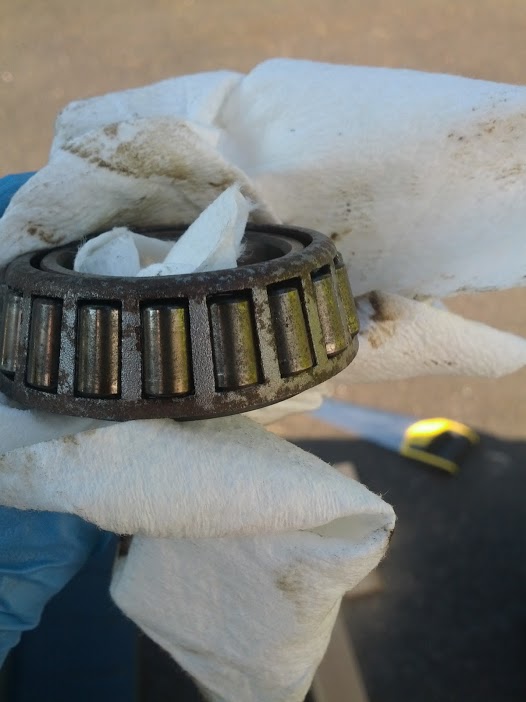 |
Replies:
Posted By: Goose
Date Posted: 01 May 2013 at 3:59pm
|
Great catch!!!!! This is why an inspection is more than worth the time and energy that you put into it. Goose ------------- Mother Goose's Caboose..2011 RP171..07 Grand Cherokee |
Posted By: bhamster
Date Posted: 01 May 2013 at 4:18pm
Yep, I was so confident that it was going to be fine that I didn't even have spare bearings (just seals). It's worth it for the peace of mind and shouldn't take very long (unless they're rusted).
|
Posted By: techntrek
Date Posted: 01 May 2013 at 8:17pm
|
Dang, glad you caught this.
------------- Doug ~ '10 171 (2009-2015) ~ 2008 Salem ~ http://www.rpod-owners.com/forum_posts.asp?TID=1723 - Pod instruction manual 
|
Posted By: bhamster
Date Posted: 02 May 2013 at 2:02am
This afternoon I finished the job and interestingly the other side had contaminants on the inside bearing... so one of each kind of failure. Luckily the bearing itself was still usable, so I just needed to replace the seal and repack. I took some more pictures this time so you could see what it looked like. Here's what it looked like after taking the cap off (so far so good):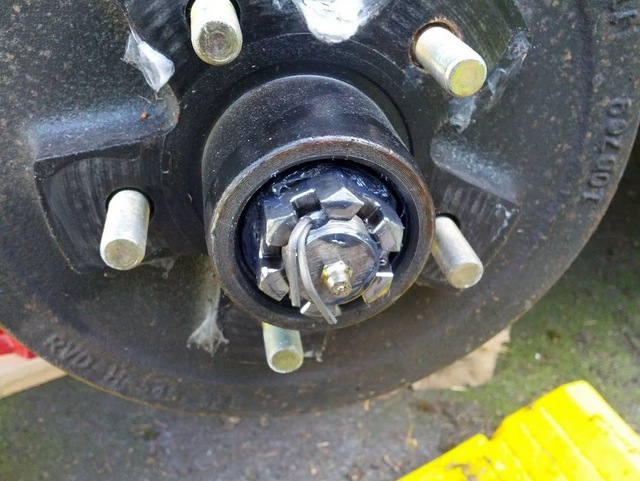 But once I pulled it off the spindle the dreaded rust color was obvious on the inner side: 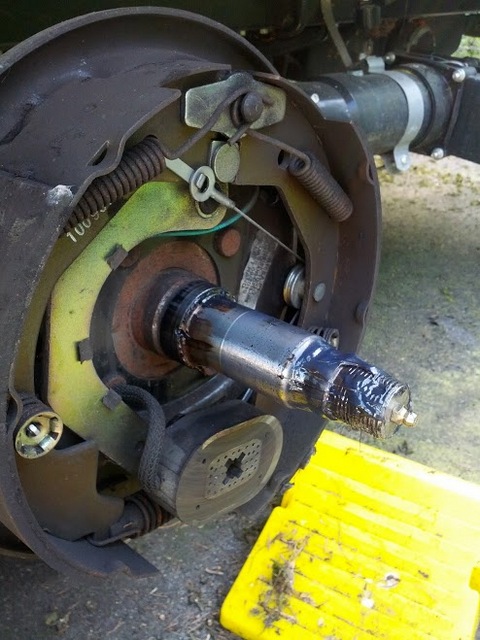 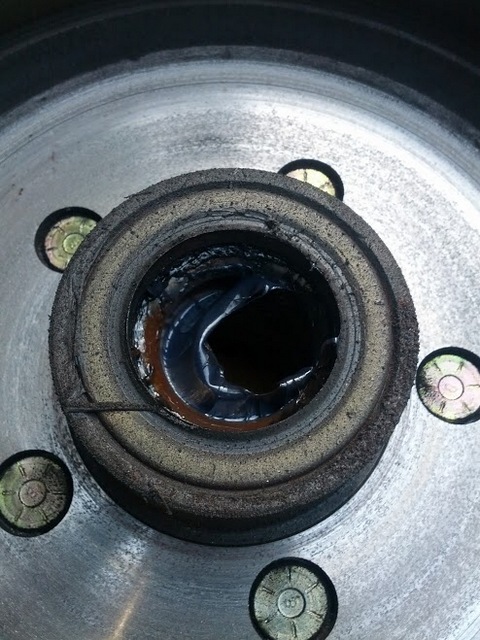 Here's a side by side comparison of the caps (note the contamination was from the rubber plug, not the sides). I never even used the rubber plug: 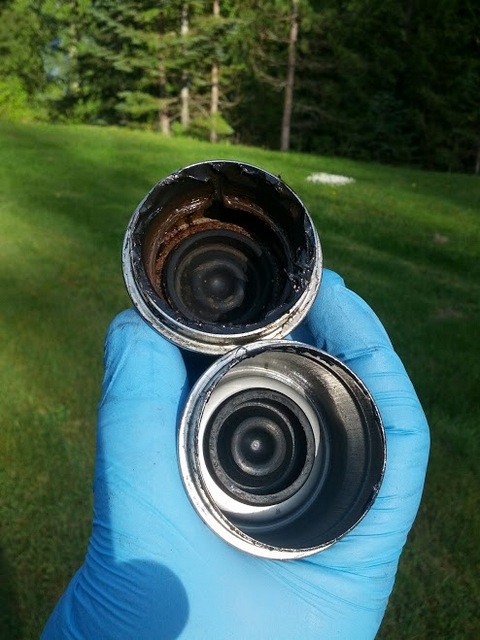 Finally, here's the new seal I put in which seemed much higher quality than the OEM seals and went in much more easily (OEM on the left, new on the right): 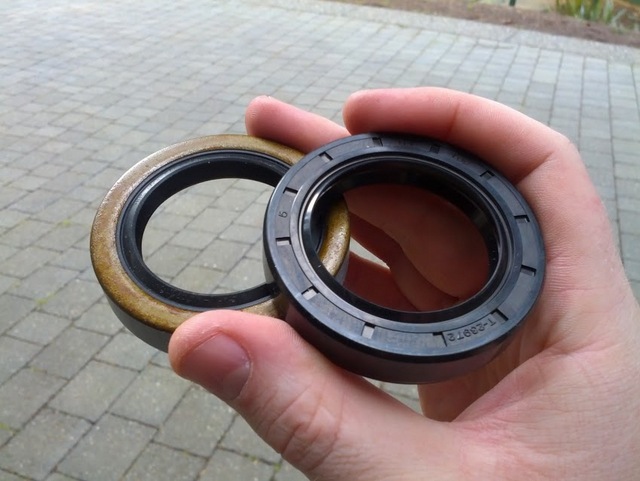 |
Posted By: Alex&Marie
Date Posted: 02 May 2013 at 12:37pm
|
nice write up and great pictures! You have motivated me (for one) to tackle this - this weekend if the weather holds. My mileage on the R-pod is probably on the high side for a trailer that is only 14 months old: about 12,000 miles. I'll let the group know what I find. ------------- Alex and Marie 2012 R-pod 177 2006 Toyota Tundra 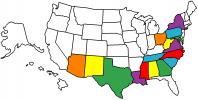
|
Posted By: bhamster
Date Posted: 02 May 2013 at 3:41pm
It's not hard at all... just messy. I used the majority of a "box of rags" switching between messy jobs and clean jobs (like taking pictures). Since everything was new for me this time each step took a few attempts due to new tools and unfamiliar procedures. By far, the hardest was removing the rusted race, but even that only took a few minutes once I found a nice-sized metal rod to bang it out with. The videos on etrailer are a great starting point.
|
Posted By: Anthony Valenzano
Date Posted: 08 May 2013 at 1:32pm
| I re-greased my bearings on my 2010 yesterday. They were in very good shape. No signs of rust at all. I was surprised at how loose the castle nut was. I wouldn't even say it was finger tight. So I'm glad I looked at it. There might have been enough slack to start some wobble. Normally when I do bearings, I tighten them good with a wrench, at which point the wheel won't turn, then I back them off until the wheel spins freely, then back it off until I can insert the pin. |
Posted By: bhamster
Date Posted: 08 May 2013 at 1:45pm
| That's another great point. Even if the bearings are in good shape, the preload needs to be adjusted as the bearings wear. Your procedure sounds similar to mine. I tightened as much as I could with a small crescent wrench while turning the wheel (this is really just to seat them properly and "smush" the grease). Then I backed off until the nut was loose, tighened again with my fingers until it catches, and then finished tightening with the wrench to the next point where I could insert the pin. So basically 1/4-turn or so past finger-tight. It should spin freely but not wobble. |
Posted By: Burt
Date Posted: 13 May 2013 at 12:20am
|
bamster: Thanks for your post about the bearings. I checked ours and to my delight, found that there were bearing buddies on them. The grease was good as were the bearings and I learned about how to jack up the POD as well. All good stuff and reminders.  Burt |
Posted By: hogone
Date Posted: 14 May 2013 at 10:00am
| In between inspection and repacking of the bearings, is it a good idea to squirt some grease in the zerk, or is this not necessary? And if so, how much? |
Posted By: Anthony Valenzano
Date Posted: 14 May 2013 at 10:40am
|
my 2 cents: Zerk fittings are a bad for modern bearing assemblies. Squeezing too much grease into them can force grease around the seal and once the grease around the seal is dissolved, allow a path for water intrusion. Zerk fittings are from a time when seals didn't even exist and you had to squeeze in grease on a daily basis to keep out water. They are still used on joints that don't have bearings and/or don't have seals, like on tractors. Those zerk fittings are probably on there for when that axle is used in boats, boats are a little different because you splash hot bearings into water and make steam, which easily dissolves grease. I don't think there is a single zerk fitting on modern cars. I just repack - and I'll check it again in a couple years. As a reference, I have a cargo trailer with the same type of bearings. I haven't touched them in ten years and they still run fine. I'm sure they are due for service, but gives you an idea how long they can last if they don't get water in them. If the seal does break you may only have a couple of months before they are shot. The best thing you can do for your bearings, after a repack, is just get in the habit of putting your hand on the hubs when you stop for gas. This is one time when you can actually kick the tire to see if the bearings are tight enough as well. As for temperature, they should be slightly elevated in temperature, but not burning hot. If they are burning hot, get to the nearest place for repair. If they seem warmer than usual, it might be time to service them when you get home. It's a little harder to tell, because the R-pods have that plastic cover on the hubs.
|
Posted By: Goose
Date Posted: 14 May 2013 at 1:59pm
|
Anthony you are right on about every time that you stop for gas put a hand on the tire and the hub to check the temp. After a few times out it is easy to tell what is normal and what might be a problem. A warmer than normal hub could be bearing or a brake that might be dragging. An under inflated tire can also add heat to the hub. Goose ------------- Mother Goose's Caboose..2011 RP171..07 Grand Cherokee |
Posted By: Thinker
Date Posted: 14 May 2013 at 5:44pm
That is a good rule of thumb on the castle nut. ------------- Tow Vehicle: 2013 Pathfinder 4WD R-POD Model 171 
|
Posted By: Craneman
Date Posted: 25 May 2013 at 2:00pm
|
OK OK OK thanks for the reminder. I noticed what looked like road tar on my left wheel wheel it wasn't. I pulled the wheel and ended up replacing bearings and the bad seal. Haven't even used it yet. Shure glad it didn't go bad when bringing it home thanks again for the reminder. Moe ------------- Jo and Gary, 2010-174,2011 F150 Jo and Gary 2010 174 2011 Ford 150 |